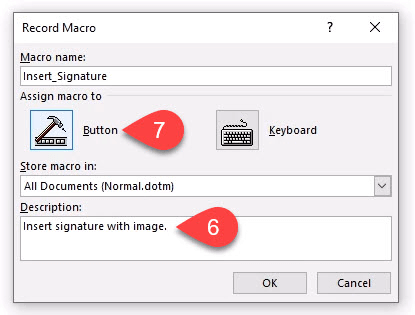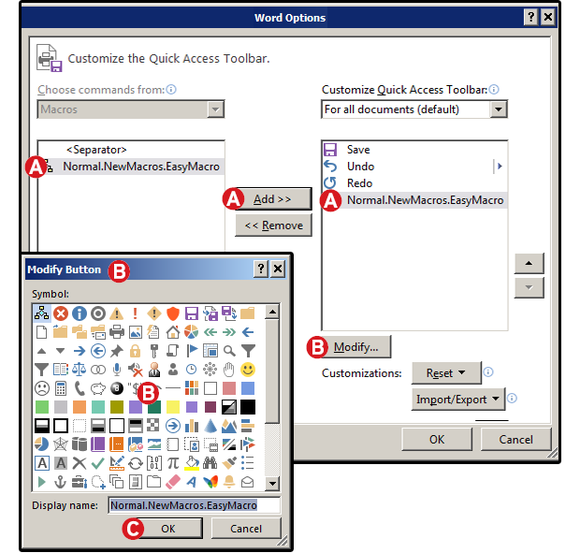

- #Use macro recorder in word upgrade
- #Use macro recorder in word software
- #Use macro recorder in word code
It includes Classic Menu for Word, Excel, PowerPoint, Access and Outlook 2007. To start the Macro Recorder when you create a Process, after you name the Process, choose option 2: Open Macro Recorder and click OK. It includes Classic Menu for Word, Excel, PowerPoint, OneNote, Outlook, Publisher, Access, InfoPath, Visio and Project 2010, 2013, 2016, 2019 and 365.
#Use macro recorder in word upgrade
The classic view helps the people to smoothly upgrade to the latest version of Office, and work with Office 2007/2010/2013/2016 as if it were Office 2003 (and 2002, 2000). In the Macro name box, enter a name for the macro.
#Use macro recorder in word code
It brings back the classic menus and toolbars to Microsoft Office (includes Word) 2007, 2010, 2013, 2016, 2019 and 365. Record a macro On the Developer tab, in the Code group, click Record Macro.

#Use macro recorder in word software
The software Classic Menu for Office is designed for the people who are accustomed to the old interface of Microsoft Office 2003, XP (2002) and 2000. Features and Commands List of Word 2010.Click the down arrow under Macros button, and choose to view or record Macro To start recording your Word macro, click Developer > Code > Record Macro or View > Macros (the down arrow) > Record Macro.With Classic Menu for Word 2007/2010/2013/2016/2019 installed, you can click Menus tab to get back the classic style interface. Use the wildcard for dynamically changing window titles: Replace MyWonderfulDocument.doc - Word. If you have Classic Menu for Word 2007/2010/2013/2016/2019 installed. Let Macro Recorder scan the program name and window title. You can also use underscore to separate two. Select the desired macro from the list using a left mouse click. The article will illustrate two ways to reach the Macro function. I usually prefer to keep my macro names as a single word, with different parts with a capitalized first alphabet. You can also run your Word macros using the macro list by following the steps below: Click on the Macros button under the Developer tab or alternatively on Macros in the menu under the View tab, and then on View Macros. Classic Menu for Office Home and Businessįor users who have recently upgraded from Microsoft Word 2003/XP(2002)/2000 to 2007/2010/2013, do you have the problem in getting accustomed to the new ribbon interface? Have you spent times finding the familiar commands but with no result? For example, where to find the Macro command in Word 2007/2010/2013/2016/2019 remains a question.Classic Menu for Office 2007 Applications.


 0 kommentar(er)
0 kommentar(er)
